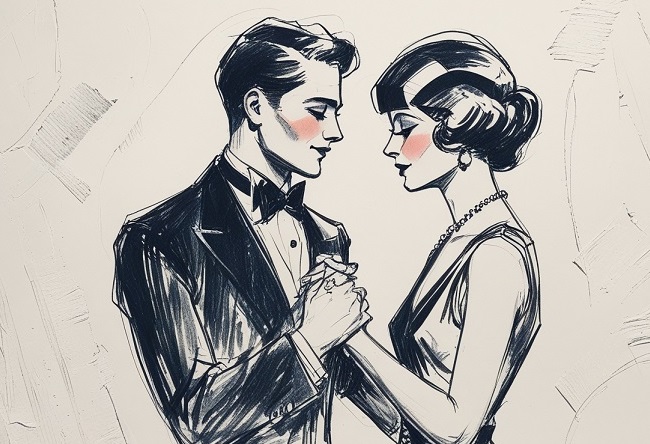Published on April 21, 2025
We’ve all felt it — that spark when you meet someone and can’t stop thinking about them. Maybe it's the way they laugh, the energy they give off, or how easy it is to talk to them. But what’s really going on in our brains when we feel attracted to someone? Let’s explore the fascinating psychology behind why we connect with certain people — and not others.

1. Proximity: Being Nearby Really Does Matter
Let’s start with one of the most overlooked factors: just being close by. Sounds too simple, right? But research shows that we’re more likely to feel attracted to people we see often — like someone at work, in your class, or your apartment building.
This is called the proximity effect. It’s not just about distance, but opportunity. The more often your paths cross, the more chances there are for conversations, shared moments, and eventually… connection.
It’s one reason so many relationships start in schools, offices, or neighborhoods. We can’t fall for someone we never meet — and proximity makes meeting (and bonding) a lot easier.
2. Familiarity: We Like What We Know
Building on proximity is the idea of familiarity. The more we’re exposed to someone (in a neutral or positive way), the more we tend to like them. Psychologists call this the mere exposure effect.
It doesn’t have to be love at first sight. Sometimes just seeing someone’s face again and again creates a sense of comfort. We’re wired to find safety in the familiar. That’s why, over time, someone can “grow on you.”
In dating apps or fast-paced social media feeds, this effect often gets lost — we don’t see people enough to let this natural process work its magic.
3. Similarity: The Hidden Glue
“Do opposites attract?” Maybe sometimes. But most of the time, we’re drawn to people who are like us. Similarity is a major driver of attraction — whether it’s shared values, sense of humor, background, or even the way we talk.
Why? Because similarity feels validating. It says, “You see the world the way I do.” It reduces friction, boosts understanding, and makes us feel more connected. Even shared music tastes or favorite shows can trigger that instant bond.
Interestingly, perceived similarity matters even more than actual similarity. If you think you’re alike, that’s often enough for the attraction to kick in — even if you’re quite different deep down.
4. Reciprocity: We Like People Who Like Us
This one is simple, but powerful. When we know someone is into us — we tend to feel more into them, too.
It’s called the reciprocity of liking. Being liked feels good. It boosts our confidence, gives us emotional safety, and removes the fear of rejection. That creates space for feelings to grow.
But here’s the twist — reciprocity works best when it feels personal and genuine. If someone flirts with everyone, it’s less attractive. But if someone clearly lights up just for you, it creates a special connection.
5. Physical Attractiveness: More Than Just Looks
Let’s be honest — physical appearance still plays a role. Especially in the early stages of attraction, looks can grab attention. But what we find attractive isn’t just about being “hot.” It’s surprisingly complex.
Psychologists have found that people are often drawn to:
- Symmetrical faces (linked to health and balance)
- Averageness (faces that blend features, not extremes)
- Feminine or masculine traits (depending on the viewer)
- Youthfulness and health (clear skin, bright eyes, etc.)
Also, we tend to associate beauty with other good qualities — like being smart, kind, or successful. This is called the halo effect. It’s not always fair, but it’s how our brains work.

6. Personality: The Long-Term Attraction Factor
Physical attraction might open the door, but personality is what keeps people around. Studies consistently show that traits like:
- Kindness
- Sense of humor
- Intelligence
- Confidence
- Emotional stability
...are some of the most attractive features in a long-term partner.
People who are genuinely kind not only make others feel good — they actually appear more attractive physically, too. Kindness seems to "soften" features and create emotional warmth that we instinctively respond to.
7. Flirting, Chemistry, and the X-Factor
Sometimes, attraction isn’t logical. You meet someone, and BOOM — chemistry. What’s happening here?
This “spark” often comes from a mix of nonverbal signals: eye contact, voice tone, mirroring body language, even how someone smells (yes, really). It creates a gut-level reaction that feels magnetic.
Flirting — when done playfully and respectfully — helps amplify that spark. It sends signals of interest and fun, making the interaction exciting and emotionally rewarding.
8. Final Thoughts: Attraction Is a Puzzle
Attraction isn’t just about looks or fate — it’s a mix of psychological cues, personal preferences, and emotional timing. Understanding what’s going on beneath the surface can help you:
- Recognize real connection vs. passing crushes
- Build deeper, more meaningful relationships
- Let go of toxic myths (like “playing hard to get” always works)
At the end of the day, we all want to feel seen, understood, and appreciated. That’s what real attraction is built on — not just butterflies, but bonding.
This post is part of our series on Decoding Desire — exploring the science and emotion behind human attraction. Want to learn more? Browse the full series on erosbase.com.